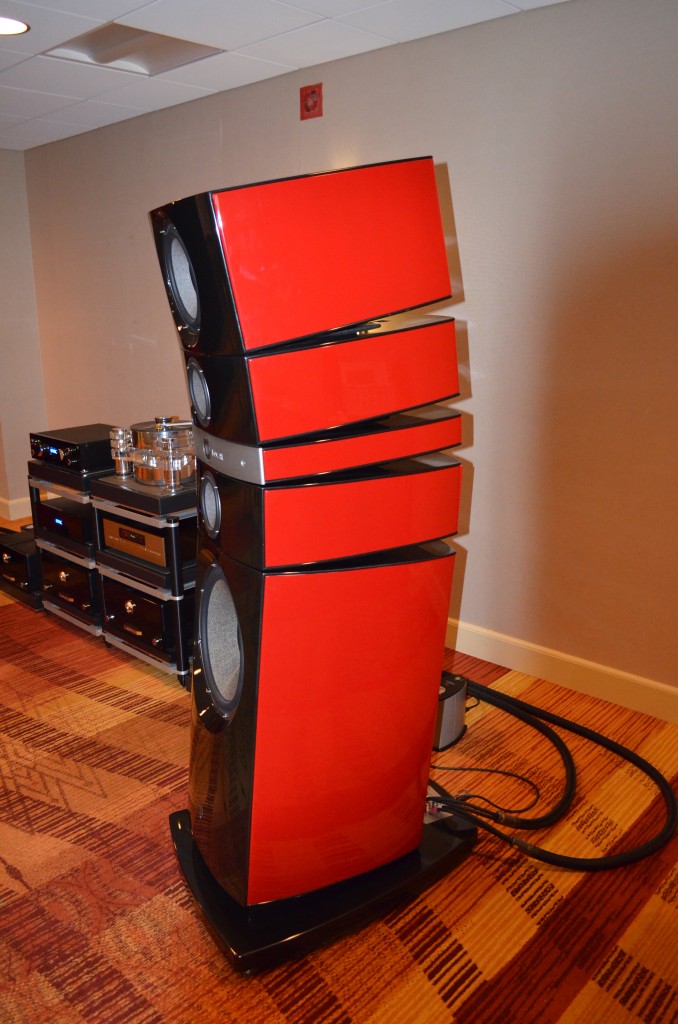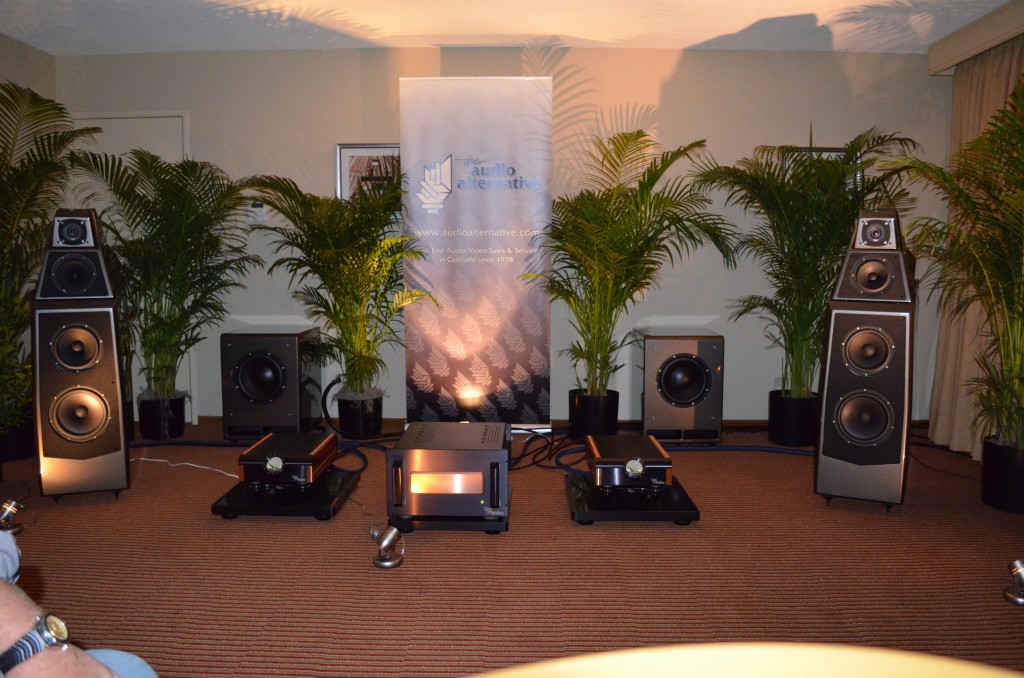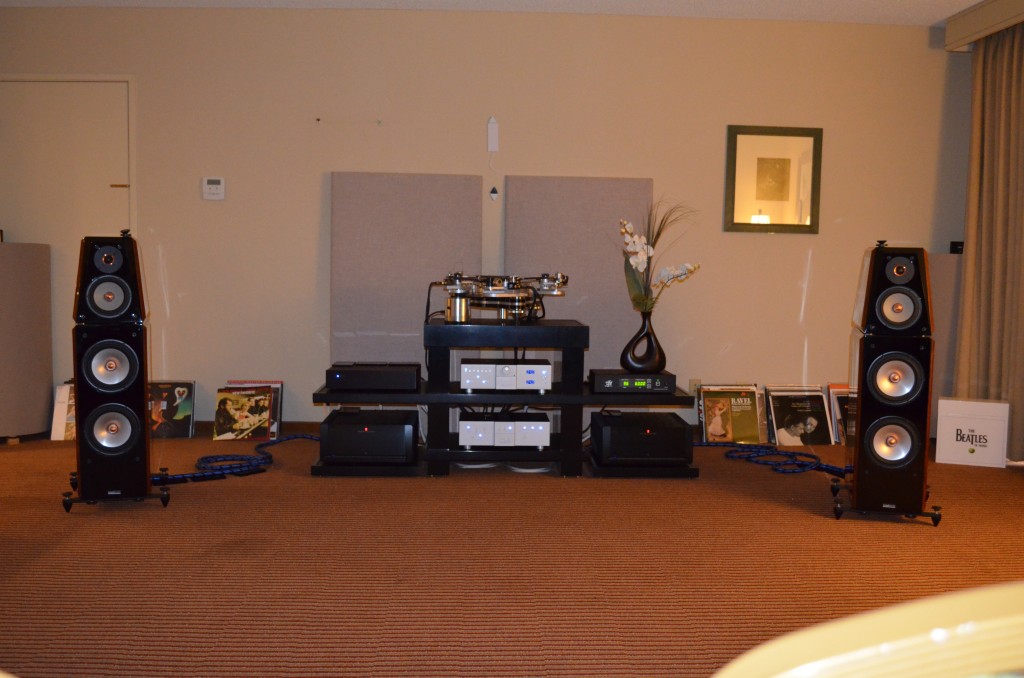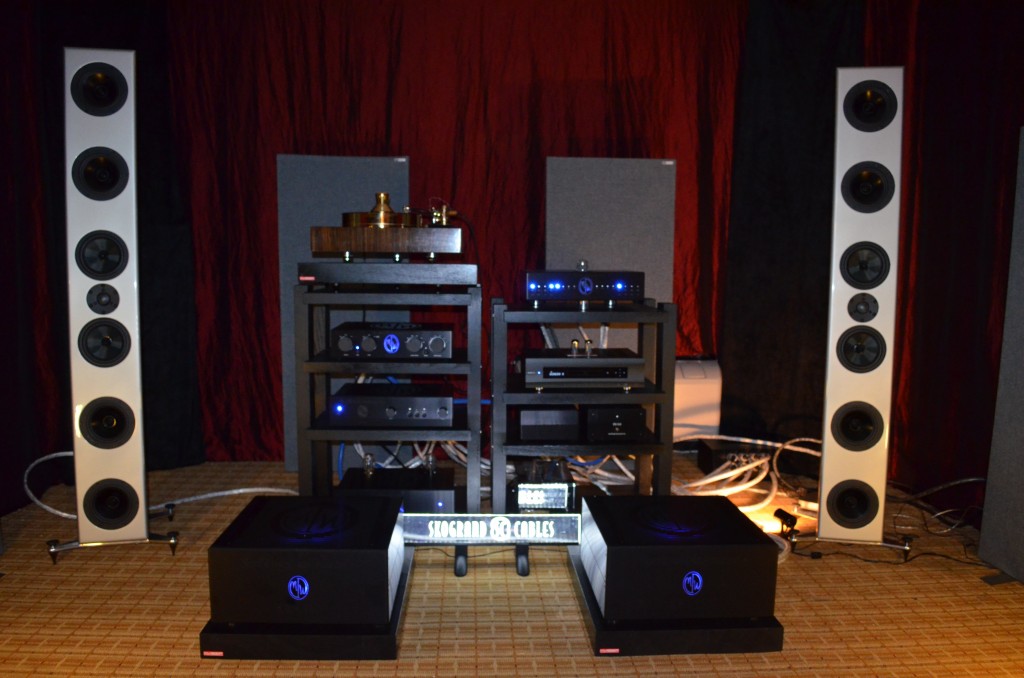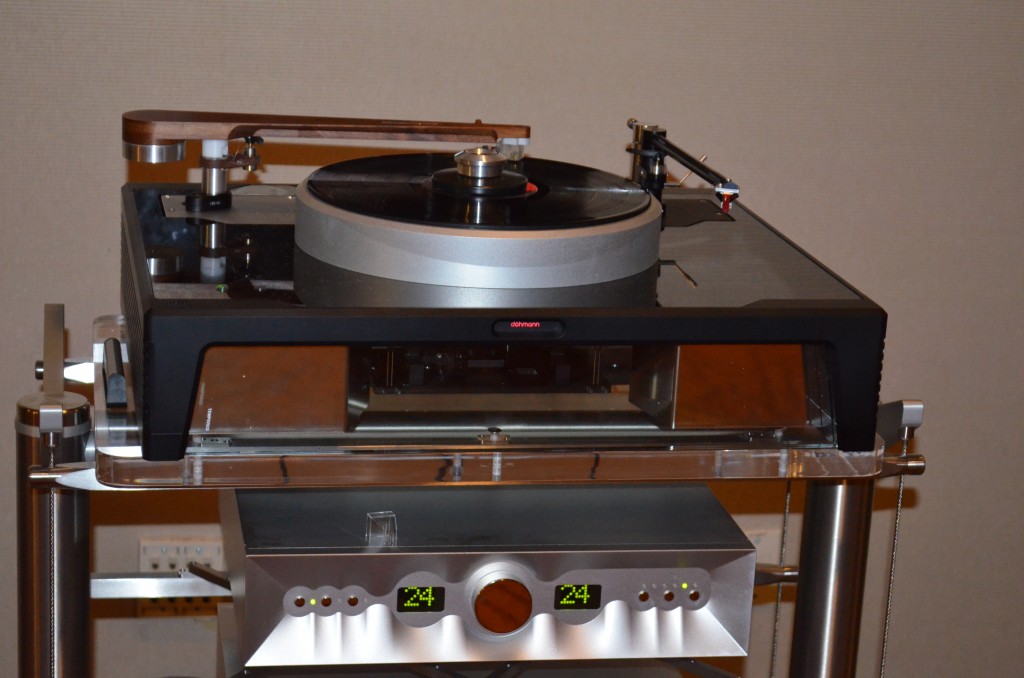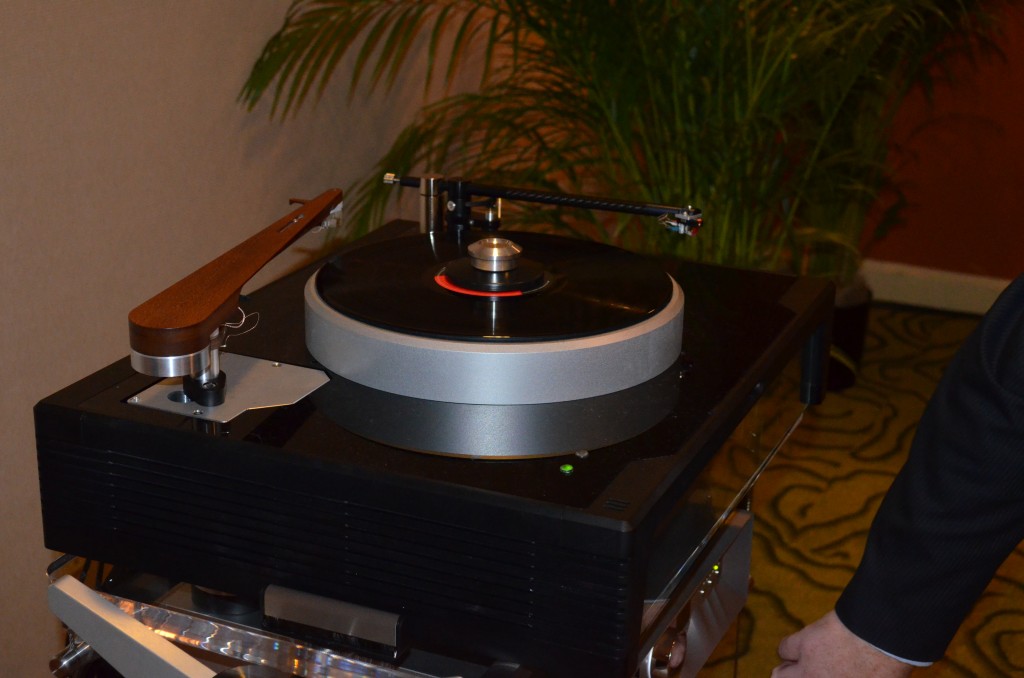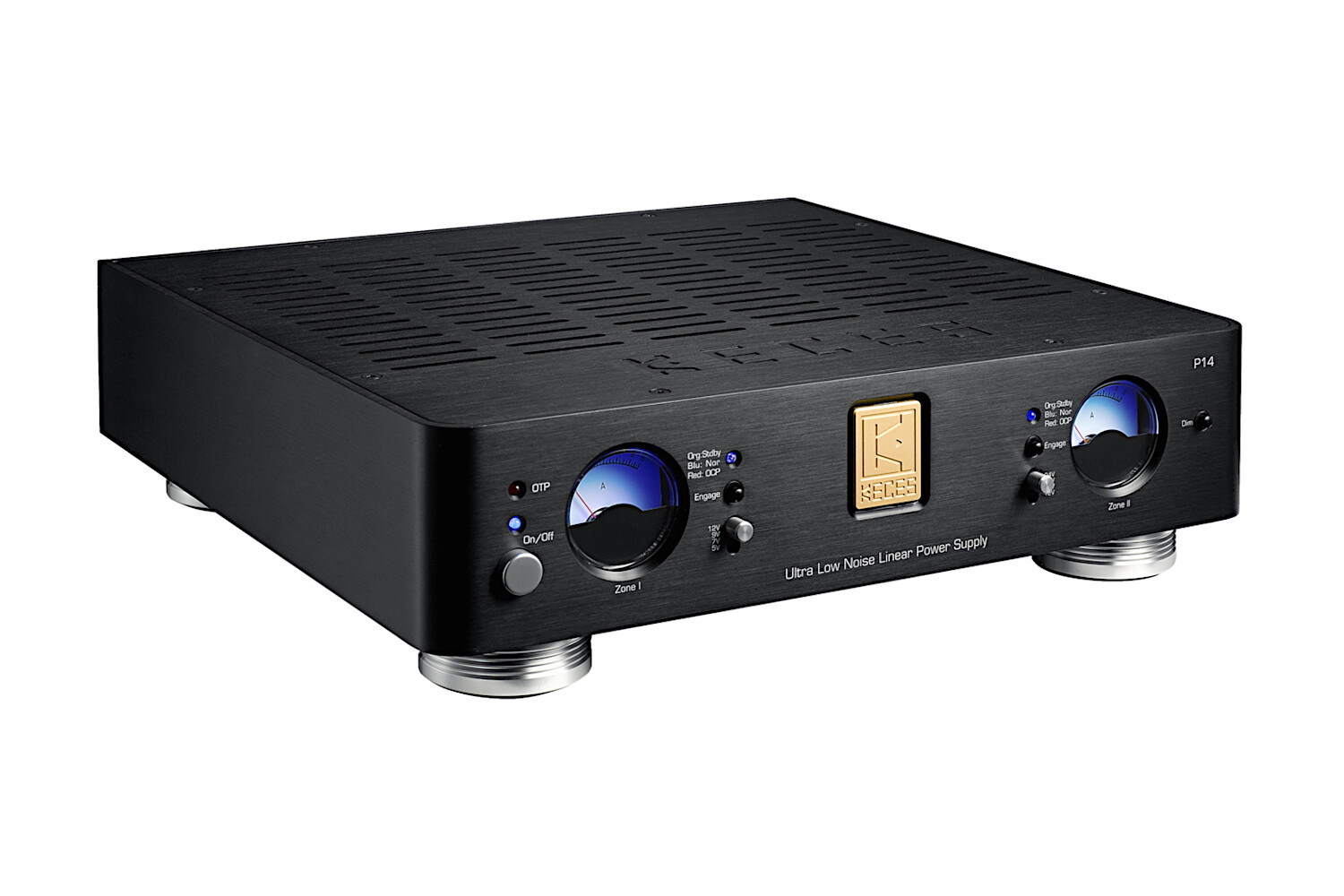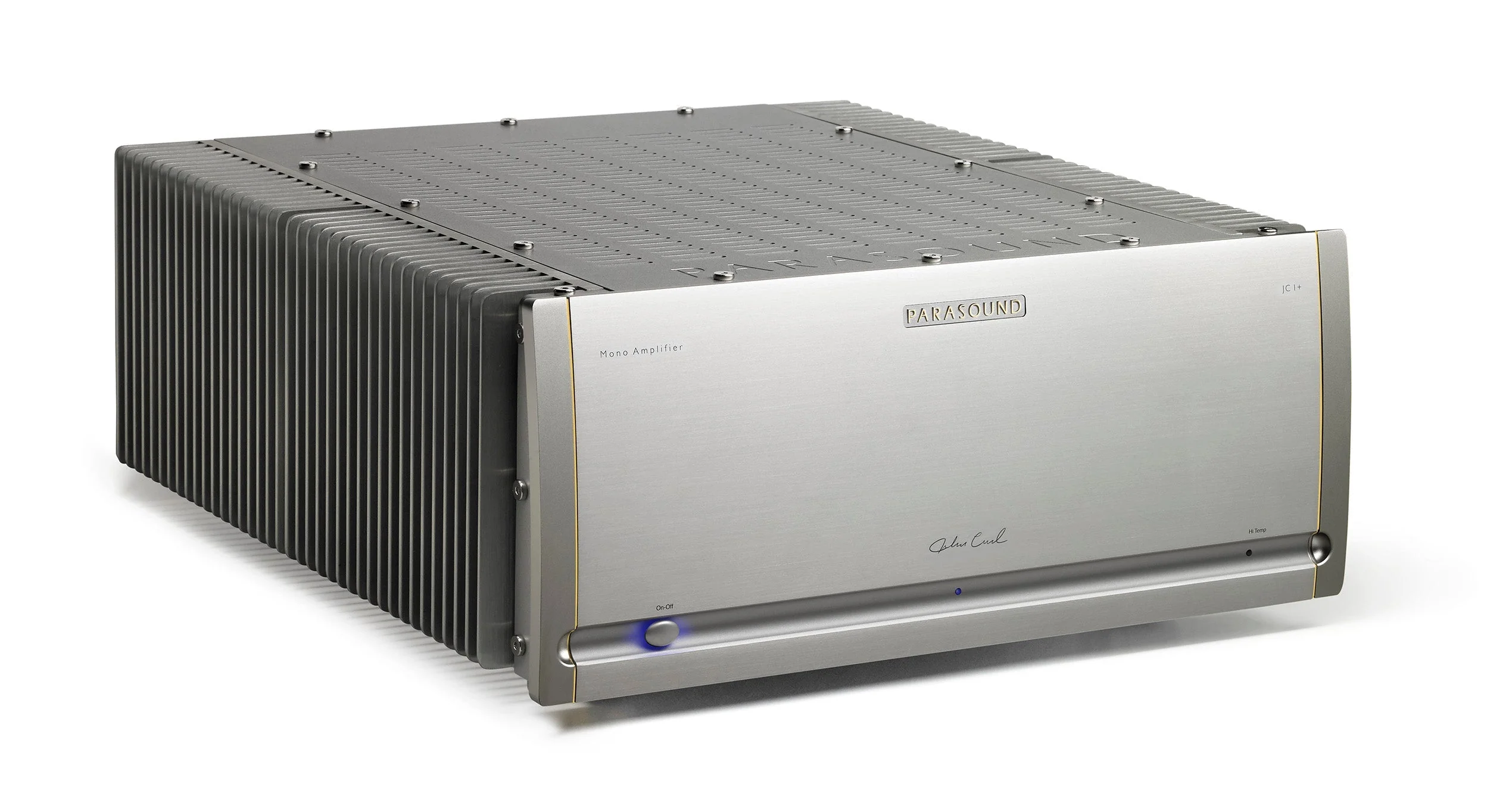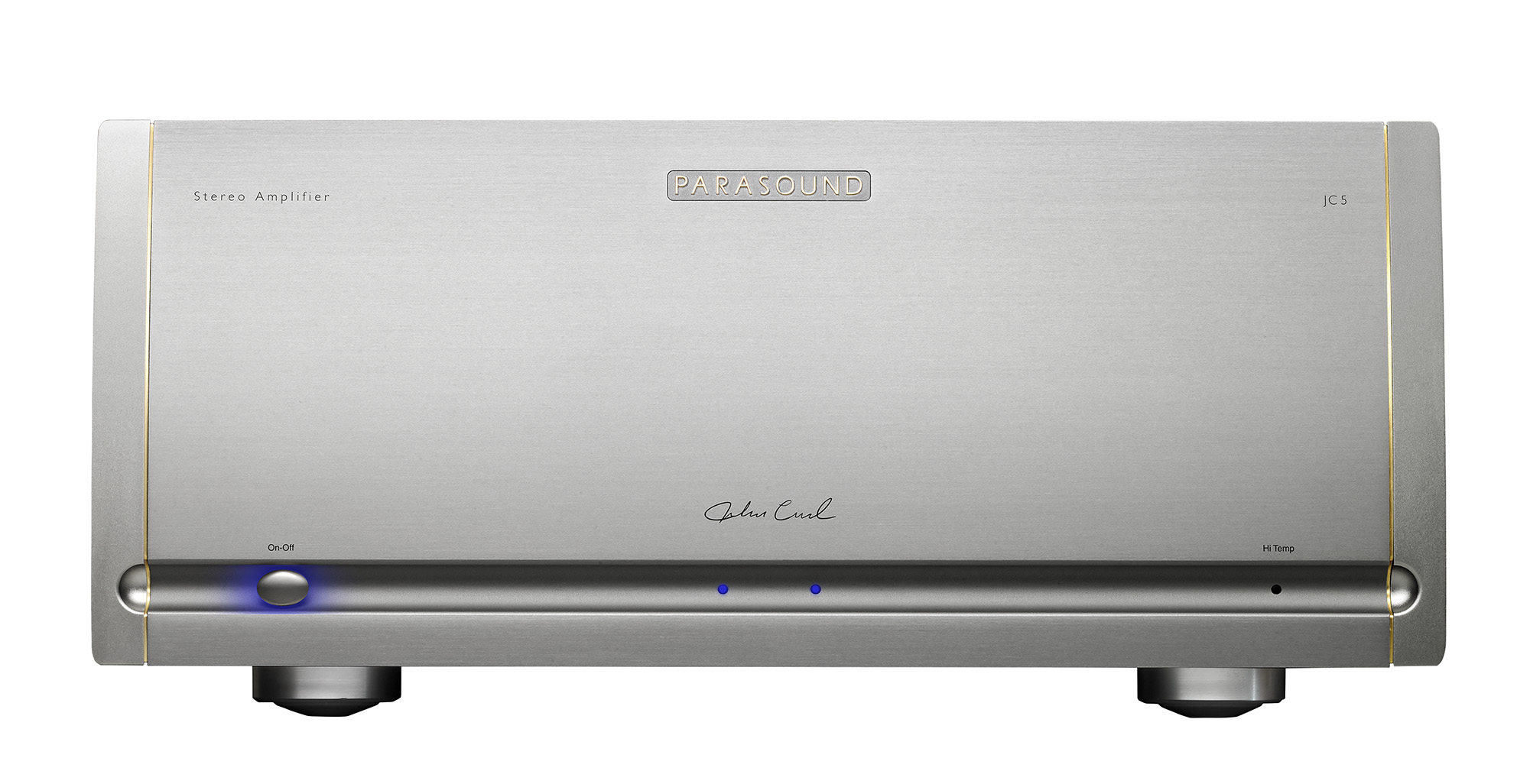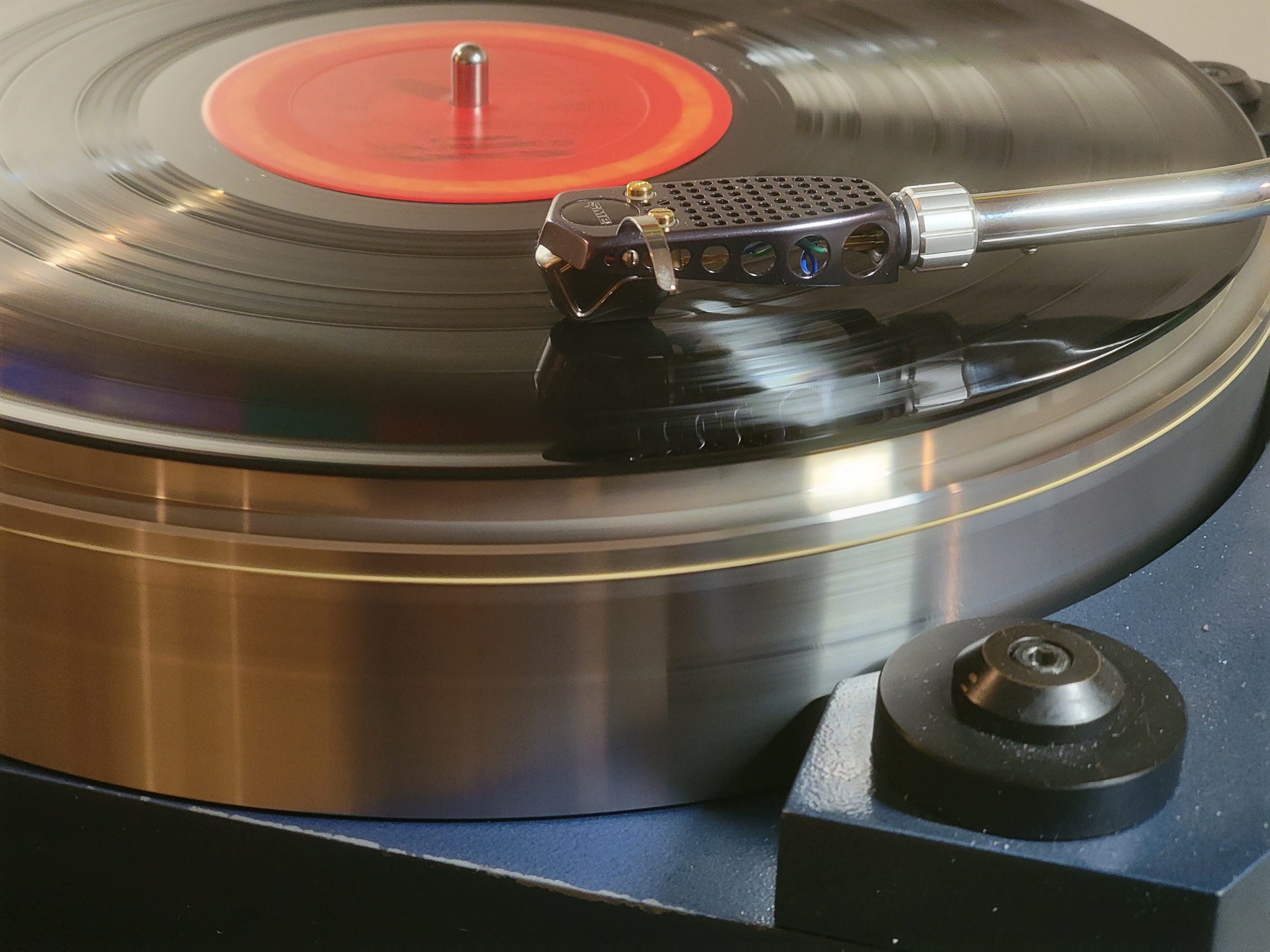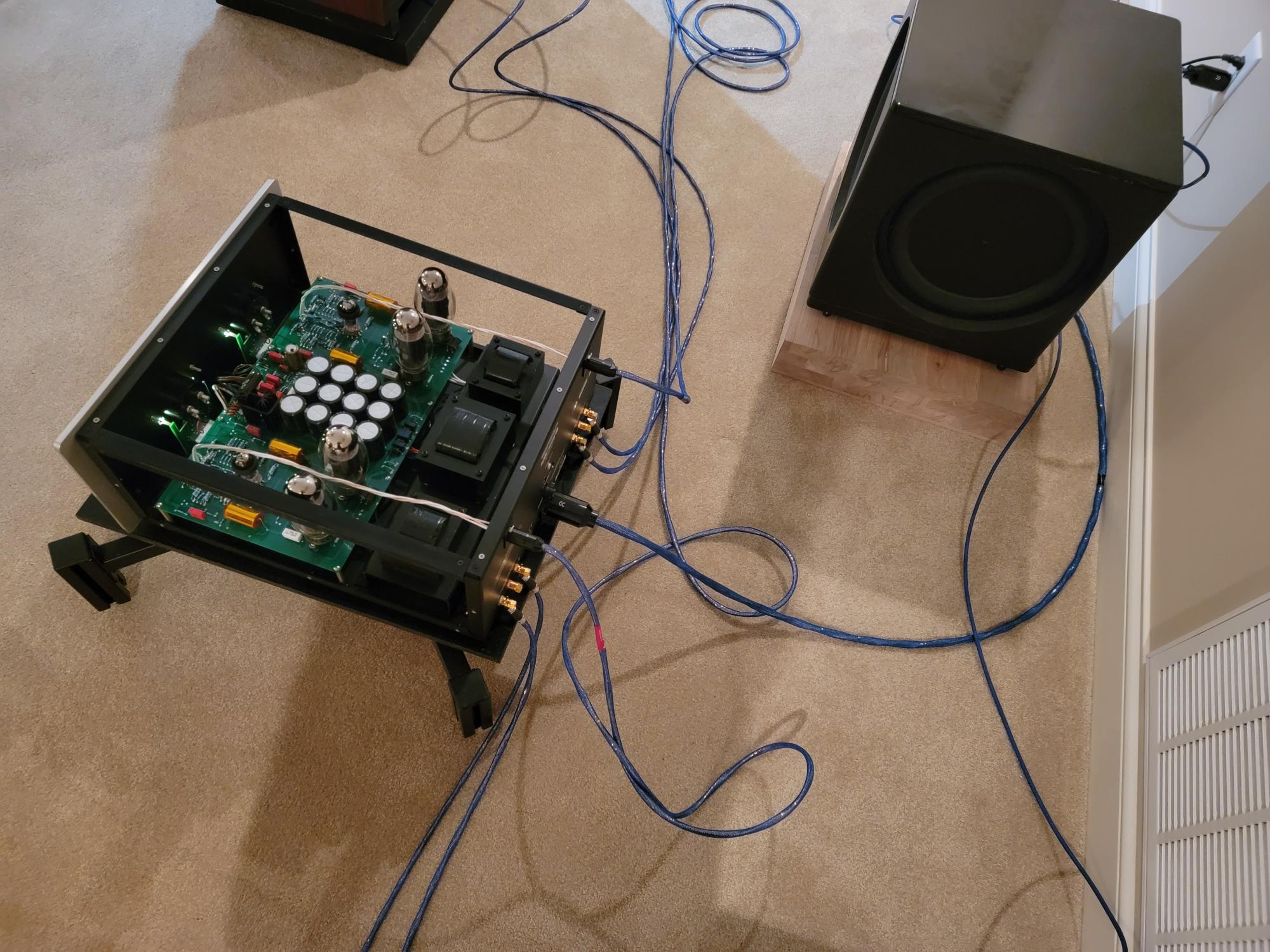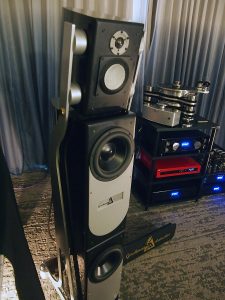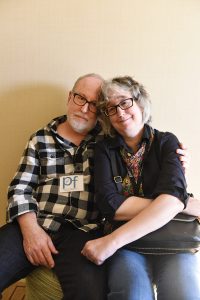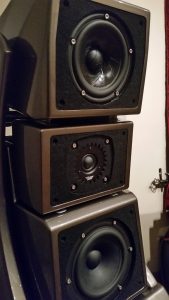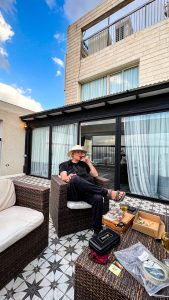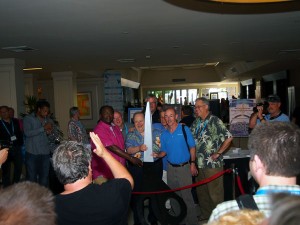Another year and another RMAF show is in the books. I'm going to tell you about some of the rooms that I considered to sound very, very good, and I will leave out the rooms which didn't sound so great. As we all know by now, pulling off setting up a system in a hotel room and getting anything approaching great sound is no easy task. All of the exhibitors put in an incredible amount of work and no small pile of money to come to these shows and set their systems up so we can hear their products and for that they surely deserve our respect. And besides, this is Positive Feedback, not Negative Feedback.
So let's cut right to the chase: The best sounding room at the show for me was the Focal/VAC room. I have heard the giant Focal speakers numerous times at previous shows, but I never heard them sound this good before. I think that the VAC gear had a lot to do with that. Not only was the soundstage huge, everything sounded correctly proportioned with the right amount of weight for individual instruments. I do love when you inquire about the price of the speakers and the representative looks at you and says "Two" and you instinctively know that he means $200,000.00.
VAC was introducing a brand new amp at the show that looks to be something very special. I spent some time talking with Kevin Hayes about his new amp and his iQ bias system. You can read about how the iQ bias system works here
The new VAC amp can be a 100 watt per channel stereo amp or you can flip a switch and turn it into a 200 watt per channel monoblock. Not only does the iQ bias system hold the bias rock steady under dynamic signal conditions, Kevin has packed this amp with other intelligence as well. There is a tube health monitoring circuit that lets you know when it's time to change an output tube. In the event of an output tube failure, a light will light up on the front panel to let you know which output tube needs to be changed out. The circuit is designed to be bomb-proof so that in the event of a power tube failure, no harm will come to the amp. No need to pack it up and send it back to VAC because a tube failure took out part of the circuit. You just simply remove the bad tube, plug in a new tube, hit the power switch, and you are back up and running. Oh, and did I mention that all of the VAC gear is drop-dead gorgeous? It is. The retail price of the new VAC amp is $14k and it's one of first new products to incorporate the trickle down technology from VAC's Statement series of amplifiers. I would love to review this new amp!
Next on my list for great sounding rooms was the D'agostino/Wilson room. I would say without a doubt this was the best I have ever heard the Alexia speakers sound (and it didn't hurt that they were augmented by a pair of the Wilson Watch Dog subs). The Alexia speakers were powered by a pair of the Master Statement Momentum mono amps and the Master Power Classic Stereo amplifier was powering the Watch Dog subs. Also in the mix was the brand new Momentum Phono Amplifier.
The D'agostino/Wilson combo was a match made in heaven and I could have just stayed there in their room for hours and enjoyed the music which is what this hobby is all about. This room sounded more like live music playing and less like a facsimile of music playing. The sound was open, huge, and very dynamic. Did I mention effortless sounding? It was to my ears.
Third on my list is the Joseph Audio/VPI room. The VPI Avenger table with magnetic drive is quite something to see in person-especially when it's outfitted with 3 tonearms like it was in this room. VPI Avenger tables seemed to be everywhere at RMAF, but none looked better than the Avenger in the Joseph Audio/VPI/DSA/Parasound room. I have to give a shout out to the DSA Phono II phono stage. This is a very good sounding phono stage that I have heard numerous times at shows. It has provisions for 3 separate phono inputs and of course, all 3 inputs were in use from the 3 arms mounted on the VPI Avenger table. You can instantly switch from one arm to another with the DSA and it's just a super versatile phono section. If I could change one thing about the DSA Phono II, it would be dimming those blue LEDs on the front panel. There is a bunch of them and they are BRIGHT. The Joseph Audio Pearl 3 speakers sounded really good in this system and they are beautiful to look at as well.
Last but not least, I need to mention the Skogrand/Endavour/ModWright Instruments room. I had never heard of the Endavour speakers before, but I can tell you I was mighty impressed by what I heard from them in this room. I whipped out my MoFi Garcia/Grisman LP and had them plop it onto their Triangle Arts table and play "Devil is a Friend of Mine." I can honestly say I have never heard this cut sound better and it sounds mighty good at my house. If they can pull off this quality of sound in a hotel room, I can just imagine what they could do when optimized in an appropriate sized dedicated room.
One Honorable Mention: Ryan/Solution room. I first heard Ryan speakers last year and was very impressed. The quality of the sound was only surpassed by the quality of the woodwork. This year Ryan was displaying a $14,999 speaker that truly sounded wonderful in concert with the Constellation gear. Ryan speakers deserve to be heard because they are well designed, well made, and simply sound like music. The Ryan room was able to make digital sound really good.
I heard the new Döhmann turntable in the Thrax room. The table is beautiful to look at and would be worth an extended listening session for sure.
As a lover of analog, I'm aware of all the reasons/excuses that audiophiles use for why they either abandoned analog and converted to digital or if they are young enough, why they never embraced analog and have only owned digital playback gear and software. Digital is easy, convenient, clean, and you can sit back in your chair with your remote and bathe yourself in digital heaven without turning a hair. Analog of course is a giant pain in the ass by comparison. You have to know how to set up your table, arm, and cartridge. You need to keep your vinyl clean. And horror of horrors, you actually have to get off your butt and change LPs.
The reality of modern day digital (post one-box CD players) is another reality that has to be dealt with. Once digital evolved from users inserting a CD into their CD player and hitting play, life in the digital world became much more complex. Once you jump into the world of music servers and outboard DACs connected to a network (wired or Wi Fi), gone are the simplicity that CDs brought to the consumer. Now you have to install some software on your server, load drivers for your DAC, get the software to recognize your DAC and then make all of the software changes you need to make in order to optimize the sound. After that, you need to set up playlists and import files into the software. Unless you are a computer engineer, this is no walk in the park.
And I said all of that in order to tell you that I have yet to be at an audio show where some rooms that were playing exclusively digital from a server didn't have issues. I don't mean all of them of course, but there are at least several at every show and this year at RMAF was no exception. Either the server crashes, or the software crashes, or network connectivity is lost. This is always quickly followed by panicked exhibitors quickly trying to diagnose the problem and get it corrected before everyone leaves their room. Two digital rooms at RMAF this year had their system crash while I was there and in one of the rooms they said it was their DAC that crashed. I have been to three county fairs and two goat breedings and I have never heard of a DAC crashing before. The common fix for all digital problems though is to reboot the system. How many times have we all heard the words: "Did you try rebooting the system?"
Speaking of digital, I was in two different rooms that were demonstrating digital room correction. I have to preface my following remarks by saying that I hold analog in a higher regard than I hold digital. I do listen to digital regularly in my system and I do have a laptop server and a Mytek Stereo 192 DAC that plays both DSD (64 and128 files) and PCM files up to 24/192. I use JRiver and the JRiver app for my iPad. I will also say that I have no plans to use digital room correction because there is no way that I'm going to run all of my analog through an A/D process so the digital room correction can work its magic and then go through a second conversion process to change the digital back to analog (D/A) before I can hear my LPs or tapes.
Both of the rooms I was in that were demonstrating digital room correction had enthusiastic exhibitors who wanted to demonstrate the difference with the digital room correction employed and then with the correction removed from the signal path. For those of you who heard the same demos, I'm going to go out on a limb here and say that in both rooms, I preferred the sound of the digital room correction turned off. To my ears, the sound became thinner, brighter, and lighter with the room correction engaged. Female singers lost their chests and were singing through their mouths. Bass lost its weight. And dare I say it, the room sound that is in all recordings was missing. After all, recordings are not made in vacuums. Recordings are made in real spaces whether they are recording studio rooms, concert halls, small clubs or large clubs/venues.
Digital room correction seemed to suck out the characteristics of the original recording space in the name of removing the negative artifacts from the room you are sitting in. Good sounding rooms have a warmth to them, and digital room correction removes that warmth along with the body of the singers. I may be all alone in my feelings about digital room correction, but I just have to report what I heard under show conditions. What others heard as a big improvement I heard as a loss of information. I'm sure lots if not most people will disagree with my assessment.
In closing, I want to say that Marriott does a great job every year hosting the RMAF and there is lots of hard work by lots of people to put this show together every year. There is something special about the RMAF and I hope it continues to thrive.




